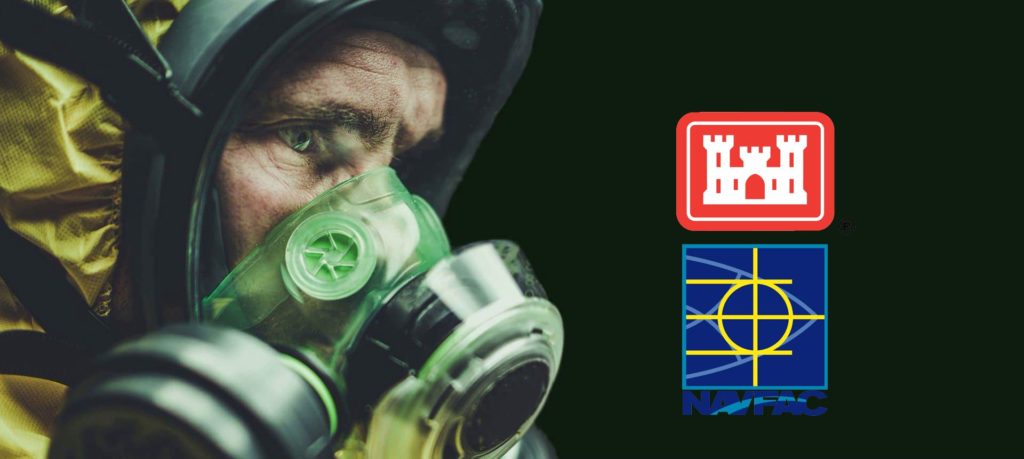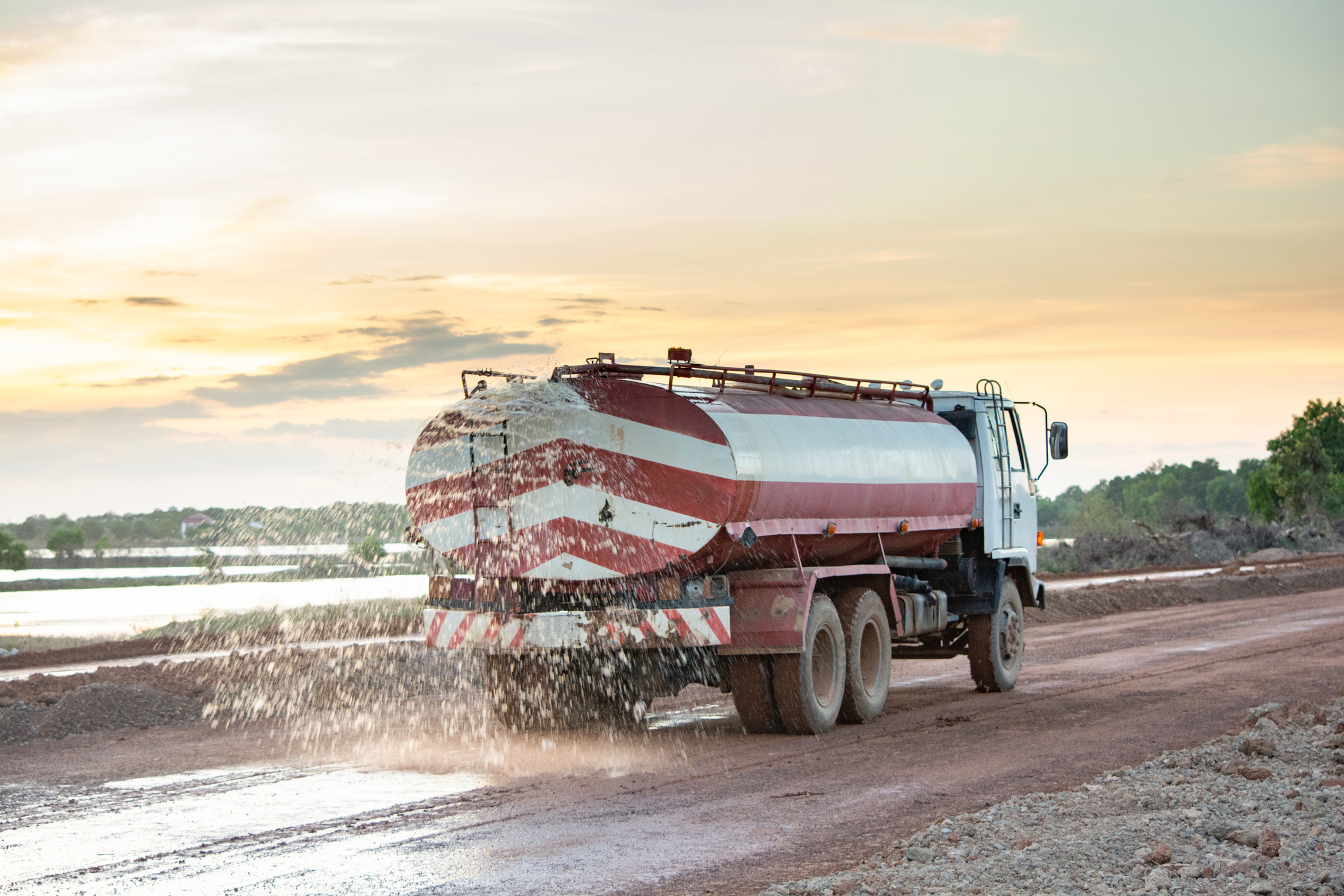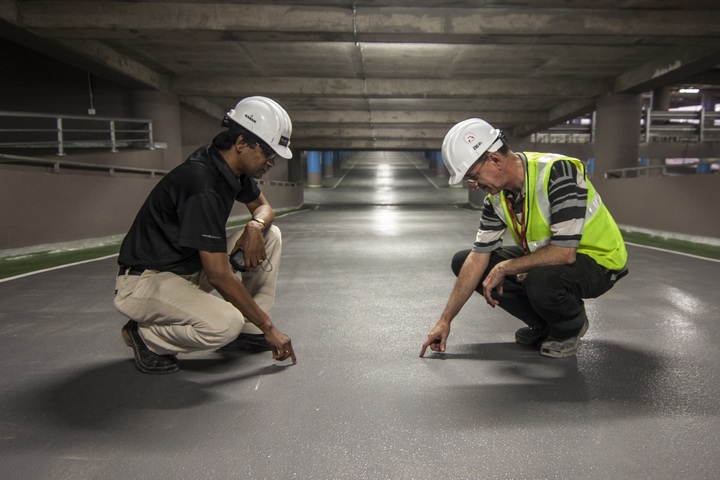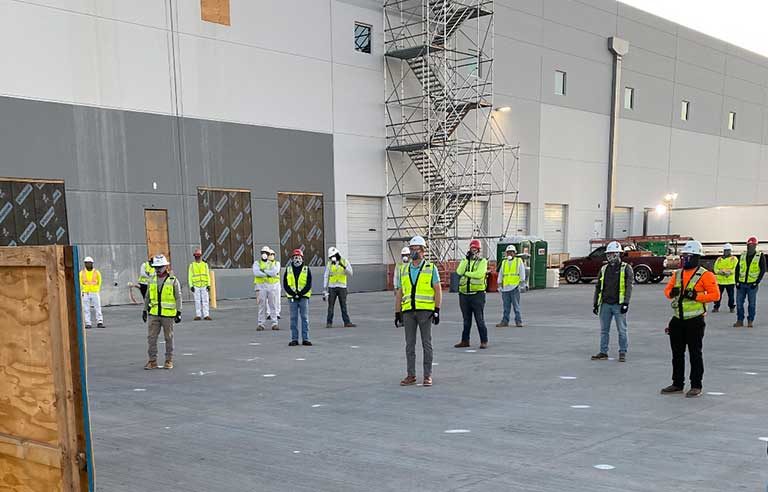Respiratory Protection in Construction

Respiratory Protection In Construction
Today we’ll cover the following Respiratory Protection in Construction Topics:
- Reducing Respiratory Hazards
- Respiratory Protection
- OSHA Standards for Respiratory Protection
- Respiratory Protection Program
- Respiratory Protection Plan
- How to become certified as a Respiratory Program Administrator.
Many construction hazards require respirator use. Respirators protect workers from locations with insufficient oxygen levels. For example: dusts, vapors, and gases. Respirators safely remove contaminants from the air and supply clean, respirable air from another source.
Reduce Respiratory Hazards

On projects with known respiratory hazards, the employer must provide the means to reduce employee exposure, for example:
- Engineering controls – local exhaust ventilation
- Work practice controls – wet-cutting techniques
- Administrative controls – Minimizing the amount of workers exposed to the hazard
When it’s not possible to protect workers from respiratory hazards through controls, appropriate respirators must be provided.
The employer must have a Respiratory Protection Program in place anytime respirators are in use. This program must meet all requirements of the Federal OSHA or State OSHA respiratory protection standard.
OSHA Standard Employer Requirements:
- Develop and implement a written respiratory protection program
- Evaluate respiratory hazards in the workplace
- Select and provide appropriate respirators
- Medical evaluations and respirator fit testing must be provided
- Provide maintenance, storage, and cleaning of respirators;
- Workers must be trained for respiratory hazards and proper use of respirators
- Evaluate workers’ use of respirators and correct problems; and
- Provide access to specific records and documents, such as a written copy of the employer’s respiratory protection program.
Respiratory Protection Program
Having to wear respiratory protection is common in the construction industry. Because each workplace is different, the employer’s Respiratory Protection Program must address all workplace conditions. Projects could differ in the following ways:
- Types and amount of respiratory hazards present
- People who manage the program;
- Policies & procedures for respirator selection, maintenance, and use;
- Methods for controlling exposure, such as using wet-cutting techniques to reduce airborne dusts.
Respiratory Protection Plan
Since construction work settings change over time, the written program must be updated as necessary to account for those changes in workplace conditions that affect respirator use. For example, changes in workplace conditions could include:
- New work processes or techniques, such as adding sandblasting;
- Using new or different building materials or chemicals;
- Variations in the amount of a respiratory hazard in the workplace
- Changes in the types of respirators being used.
The supervisor must be notified for changes in the work when they conflict with or haven’t been added to the Respiratory Protection Plan or training.
The Respiratory Protection Program must be managed by a qualified, trained program administrator. On military construction projects where Titan Consultants provides our Site Safety and Health Officers, like one of our current projects, our Texas Site Safety and Health Officer (SSHO) is the Respiratory Protection Program Administrator on a project with multiple respiratory hazards. Our SSHO’s are experienced on construction projects with silica and lead risks and are certified for Respiratory Protection for military projects to ensure they understand the requirements they must enforce.
Respiratory Protection Program Administrator
This person monitors the program and ensures workers are protected. The program administrator understands the project’s respiratory protection program and will answer any questions workers have on respirator use. The program administrator knows all requirements of the OSHA Respiratory Protection Standard, evaluates the the program periodically, and makes any necessary changes.[/vc_column_text][/vc_column][/vc_row][vc_row][vc_column][ultimate_heading main_heading=”Go Ahead, Take The Course and Get Certified!” main_heading_color=”#000000″ main_heading_font_family=”font_family:Roboto|font_call:Roboto|variant:500″ main_heading_style=”font-weight:500;” main_heading_font_size=”desktop:22px;”]Respiratory Protection certification is extremely important for Site Safety and Health Officers to have.




